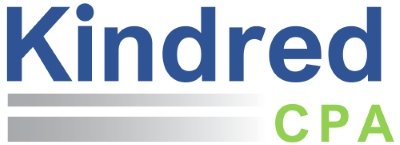We don’t usually comment on pending legislation because of the uncertainty of its passage. However, a tax bill is being fast-tracked through Congress that includes…
 Every good movie has a sequel. In this case, the “movie” is SECURE Act 2.0 – a sweeping piece of legislation that if passed, will affect both individual and company-sponsored retirement plans.
Every good movie has a sequel. In this case, the “movie” is SECURE Act 2.0 – a sweeping piece of legislation that if passed, will affect both individual and company-sponsored retirement plans.
The Back Story
In 2019, Congress passed the SECURE Act, which affected many aspects of retirement plans. One of its most memorable scenes was increasing the required minimum distribution (RMD) age from 70 1/2 to 72.
The Opening Scene . . .
In March of this year, the House passed the sequel SECURE Act 2.0, which is now being considered by the Senate. It’s worthwhile to note that – unlike most things in DC – most members of Congress seem to agree on most of the concepts in this bill. Take a moment to let that sink in – both sides of the aisle agree!!
As of June, 2022, two Senate committees have passed their own versions of SECURE Act 2.0 (and gave them distinctive names). The Senate Finance Committee unanimously approved its version of this bill, called the “EARN Act“. It will now be merged with the “Rise and Shine Act” already passed by the Senate Health, Education, Labor and Pensions Committee. Both of these Senate versions now need to be reconciled with the House version of SECURE Act 2.0 to come up with a final bill to be voted on by both Houses. This is expected to happen – and the bill is expected to pass – before the end of 2022.
The Plot
Pretty much everyone agrees on the items that should be covered in this bill, but the devil is in the details. Here are some areas under consideration:
Individual Retirement Plans
- The required minimum distribution (RMD) age would be increased from 72 to 75. Both the House and Senate versions include this provision, but don’t quite agree on when it should take effect. However, both propose the penalty for failing to take RMDs should be reduced from its current 50%.
- The House version proposes that the IRA catch up contribution limit – currently not adjusted for inflation – would be indexed in the same way 401(k) limits are already indexed.
- Both chambers agree on creating a national database to assist individuals in finding lost retirement accounts.
Company-Sponsored Retirement Plans
- The amount allowed for 401(k) and SIMPLE plan catch up contributions would be increased. However, the age at which this happens still needs to be hammered out – the Senate thinks it should begin at age 60 while the House version starts at age 62. In both cases, catch up amounts would be after-tax (Roth) contributions.
- Both chambers agree that matching contributions for 401(k) plans could be made on a Roth basis. In addition, both sides propose that matching contributions could be used to pay off student loan debt rather than deposited into an employee’s 401(k) account.
- Automatic 401(k) plan enrollment is considered in both the House and the Senate versions, but with different provisions. The House proposes automatically enrolling all employees at a 3% rate, increased each year to 10%. Workers could opt out. The Senate instead requires plans that already allow auto enrollment to check in every three years with employees who originally opted out.
- Both the House and the Senate want to provide a way for employees to access emergency funds, but they differ on the approach. The House would automatically enroll employees in emergency savings accounts at 3% of pay that could be accessed at least once a month. The maximum savings for these accounts would be $2,500, with remaining amounts automatically transferred to the company’s 401(k) plan. The Senate would allow withdrawals of up to $1,000 from existing 401(k) or IRAs without incurring the 10% penalty currently assessed to those under age 59 1/2.
This is not an exhaustive list of all the provisions in the bill, and it’s likely that the final bill will include some modifications to what’s described above. We’ll keep you posted as this legislation continues to progress.



